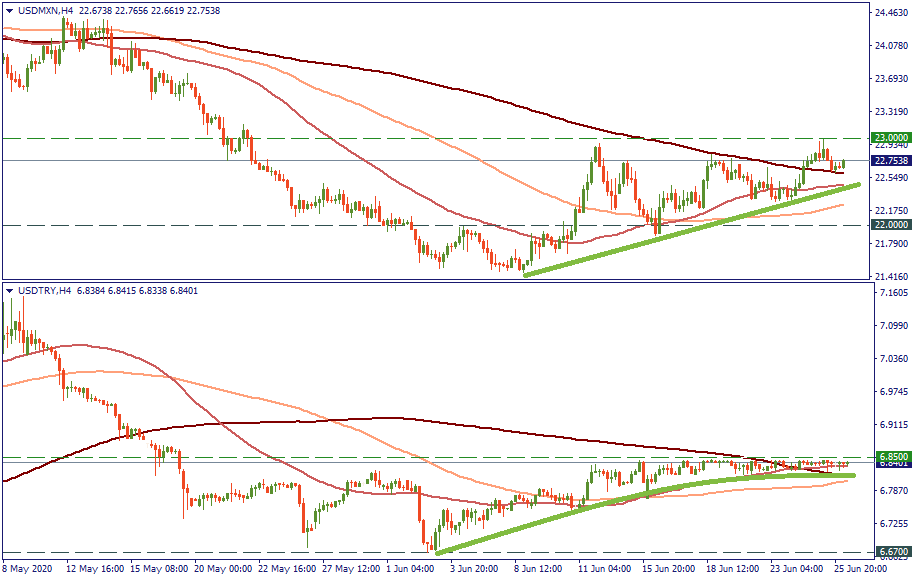MXN and TRY: consolidation at the resistance
The optimistic vibes of the end of May/beginning of June made investors lose interest in the USD. That made it lose value against risky currencies such as the MXN and the TRY. Eventually, the USD got back to power when the optimism got exhausted after the first week of June. Consequently, USD/MXN and USD/TRY started gaining value once again.
Currently, both currency pairs are at their respective tactical resistance levels: USD/MXN below 23.00 and USD/TRY at 6.85. Although trajectories are slightly different, the basic inner mechanisms of the market are the same and are dictated by the value of the USD almost irrespectively of the domestic policies in Mexico and Turkey. Still, we have to take into account that the Mexican central bank lowered its interest rate recently, while the Turkish financial authorities kept it steady.
Fundamentally, USD/MXN and USD/TRY will rise as long as the prevailing market sentiment is risk-off, just as it has been during the last three weeks. The fact that both currency pair are approaching their resistance levels and consolidating may be explained by the fact that there is actually only one serious fundamental impediment for risky moods to get back to the market: the resurgence of infections. In fact, rather, not the resurgence itself, as much as an emotional setback in the market caused by it. Even now, with infection numbers rising record high is some states, such as Texas, the market does not anonymously take that into decline: people still expect those infections to start rounding up soon, and at the same time many already lost their emotional sensitivity to the whole virus fear.
For this reason, there is a high likelihood that starting next week, the risk will be getting back, and the USD will be giving space to the MXN and TRY. That’s in the midterm, however, and just for a while. In addition to that, from purely technical perspective, both chart formations offer possibilities of a bullish outcome. That's why, watch for the signs of trend reversal or, alternatively, a new bullish wave.
In the long term, the USD will be gaining against both currencies as it strategically does against all weak currencies.
